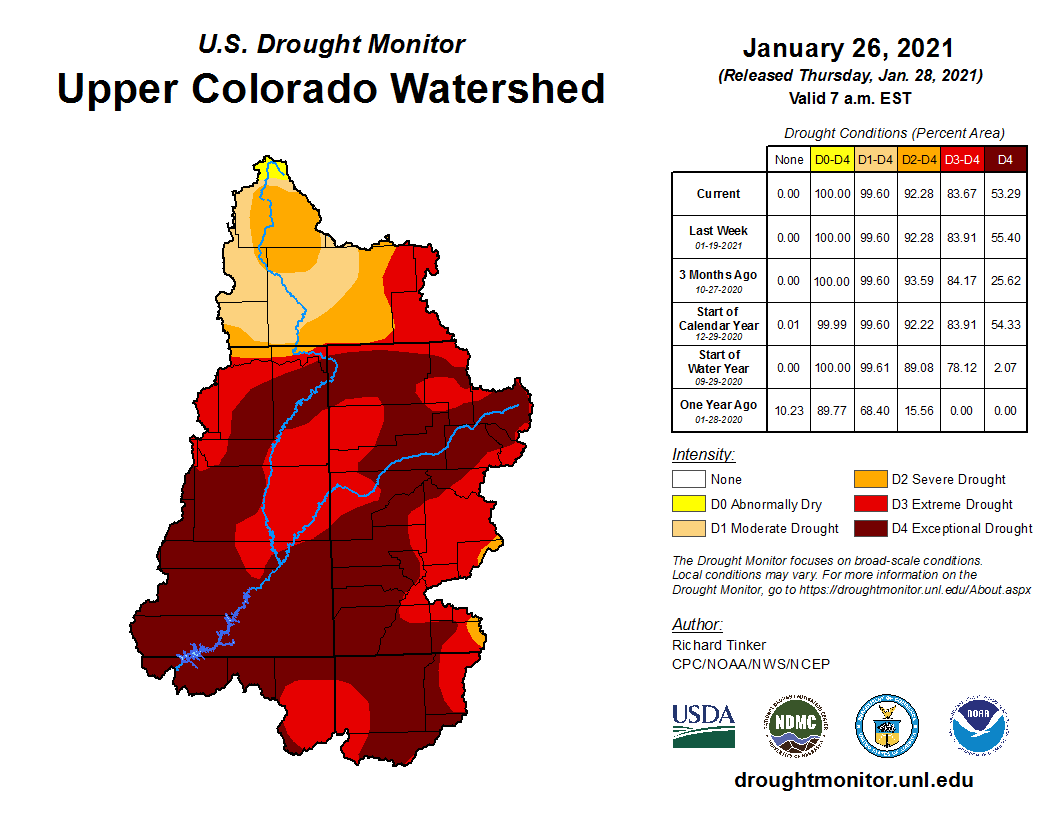Colorado River Basin In 3rd Level 4 Drought In 20 Years; "We Are Really In Unprecedented Territory"
1. 84% of Upper Basin in extreme to exceptional drought
This is the highest percentage of land in the river’s Upper Basin since 2002, which stands as the region’s driest year on record. The Lower Basin fares worse, with 93% of the land area in those categories. The basin is made up of portions of Colorado, Wyoming, Utah, New Mexico, Arizona, Nevada and California. Two Mexican states also receive Colorado River water.

Nancy Selover, Arizona’s state climatologist, says the Upper Basin figure is concerning because that accounts for the river’s headwaters. If it’s dry there, that means many more problems as the water flows downstream. “This is when we're supposed to be gaining and accumulating water in the form of snowpack, and that's not happening,” Selover said. Conditions have been deteriorating across the river basin since the summer of 2020. Monsoon rains didn’t arrive. Record-breaking high temperatures dragged well into fall. Even hardy desert plants, the ones well-adapted to water scarcity, have struggled.
“Creosote is one I personally like to call it the cockroach of the vegetation world because pretty much nothing kills creosote. It survives,” she said. But even some creosote is dying, unable to take the one-two punch of both the hottest and driest conditions on record last year in parts of Arizona. “People are having to do things that you don't necessarily see, but we have water being hauled for livestock, water being hauled in for wildlife,” Selover said.
EDIT
4. Colorado River reservoirs at 46% capacity
The Colorado River system’s reservoirs combined are currently less than half full. Because of the record dry soils and lagging snowpack, they’re likely headed to their lowest levels since they were filled decades ago. “These reservoirs are as empty now as when they started filling Glen Canyon Dam in the 1960s,” said John Fleck, director of the University of New Mexico’s water resources program. The low levels aren’t just causing hand-wringing among the West’s water officials. The dropping water and the reservoirs’ expanding bathtub rings are also tied to policy. As Lake Mead outside Las Vegas and Lake Powell in Utah decline, certain policies are triggered into action. Drought contingency plans for the Upper and Lower Basin are now in use. The Lower Basin states of Arizona and Nevada have begun to see their deliveries from the river curtailed. Those cutbacks are likely to grow steeper in 2021. An official shortage declaration from the federal government could come as early as this year, as Lake Mead is currently projected to be below 1,075 feet in elevation at the end of 2021.
EDIT
https://www.kunc.org/2021-01-29/the-colorado-river-basins-worsening-dryness-in-five-numbers
